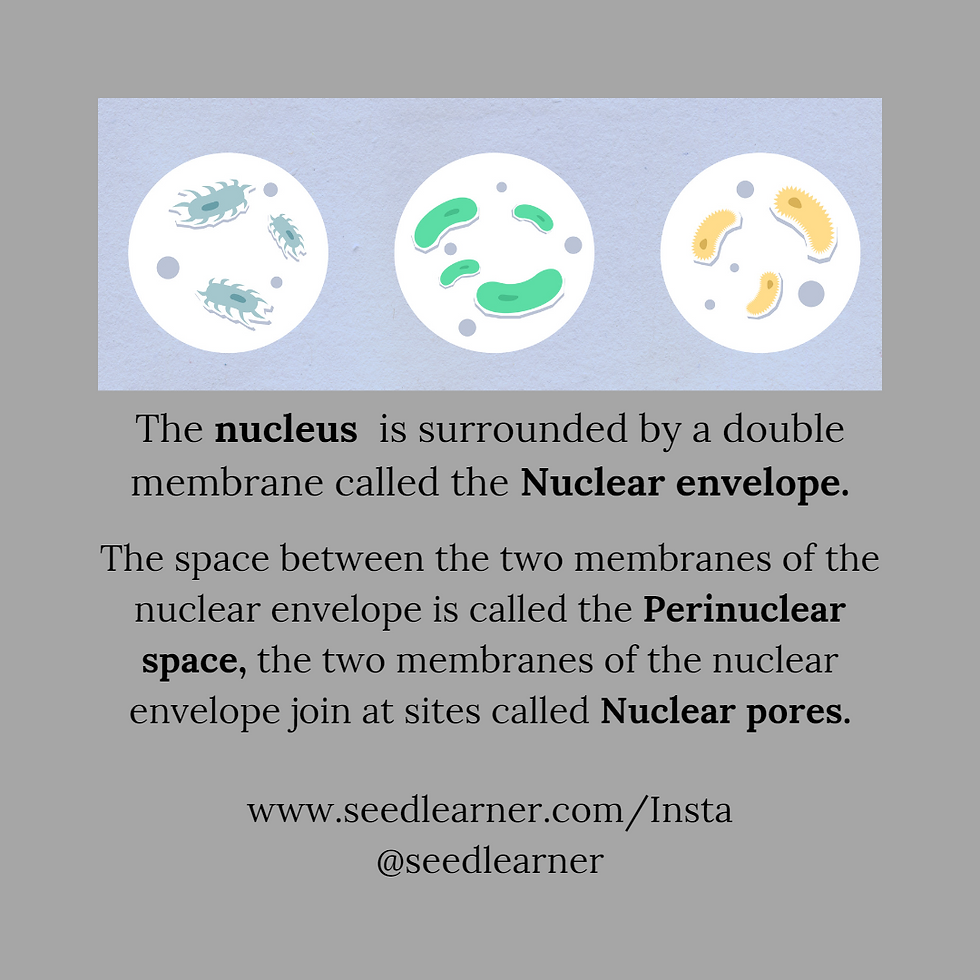The nucleus is the heart of the cell. It is here that almost all of the cell’s DNA is confined, replicated, and transcribed. The nucleus, thus, controls different metabolic as well as hereditary activities of the cell.

HISTORICAL:
Nuclei were first discovered and named by Robert Brown in 1833 in plant cells and were quickly recognized as a constant feature of all animal and plant cells.
Nucleoli were described by M.J. Schleiden in 1838, although first noted by Fontana (1781).
The term nucleolus was coined by Bowman in 1840.
In 1879, W. Flemming coined the term chromatin for chromosomal meshwork.
Strasburger (1882) introduced the terms cytoplasm and nucleoplasm.
In 1934, Barbara McClintock recognized and named nucleolar organizers in the chromosomes.
In 1950, Callan and Tomlin first observed the nucleopores in the nuclei of amphibian oocytes.
The role of the nucleus in heredity was firmly established by the grafting experiments of Hammerling (1953) with Acetabularia.
The ultrastructure of the nuclear envelope, pore complexes, and nuclear lamina was worked out by Kirschner, Schatten, and Thoman (1978).

The nucleus (plural nuclei) is the organelle that contains the genetic information primarily responsible for regulating the cell's metabolism, growth, and differentiation.
A synonymous term for this organelle is the Greek word karyon.
The two semiautonomous organelles, chloroplasts, and mitochondria house the remaining genetic material of the cell.
The nuclear envelope, a bilayer membrane, encloses the nucleus.
The two membranes that make up the nuclear envelope link at locations known as nuclear pores and the area between the two membranes is known as the perinuclear gap.
The "pore" in the nucleus is actually a complex structure made up of over a hundred distinct proteins organized in an octagonal pattern to form a nuclear pore complex.
The central “plug” of the complex acts as an active (ATP-driven) transporter that facilitates the movement of macromolecules and ribosomal subunits both into and out of the nucleus.
A specific amino acid sequence called the nuclear localization signal is required for a protein to gain entry into the nucleus.
Collectively, these genes and their intervening sequences are referred to as the nuclear genome.
The following statement of Vincent Allfrey (1968) completely qualifies the central position of the nucleus in the affairs of a eukaryotic cell:
“The cell nucleus, central and commanding, is essential for the biosynthetic events that characterize cell type and cell fraction; it is a vault of genetic information encoding the past history and future prospects of the cell, an organelle submerged and deceptively serene in its sea of turbulent cytoplasm, a firm and purposeful guide, a barometer exquisitely sensitive to the changing demands of the organism and its environment. This is our subject — to be examined in terms of its ultrastructure, composition, and function.”
Eventuality:
All eukaryotic cells in plants and animals include a nucleus. The mature sieve tubes of higher plants and mammalian erythrocytes are two examples of non-nucleated eukaryotic cells. Such cells have nuclei in the formative phases of development. Mature mammalian red blood cells are not cells but rather are referred to as red blood "corpuscles" due to their lack of nuclei.
The single, circular, and massive DNA molecule stays in close contact with the cytoplasm because the prokaryotic cells of bacteria lack a proper nucleus. The position or placement of the nucleus within a cell often identifies the kind of cell and is frequently changeable. Typically, the nucleus stays in the core. But depending on the cell's metabolic condition, its location may occasionally vary.
The nucleus is the site of storage and replication of the chromosomes, composed of DNA and its associated proteins. Collectively, this DNA–protein complex is known as chromatin. The linear length of all the DNA within any plant genome is usually millions of times greater than the diameter of the nucleus in which it is found.
Nuclei contain a densely granular region, called the nucleolus (plural nucleoli), which is the site of ribosome synthesis.
The nucleolus includes portions of one or more chromosomes where ribosomal RNA (rRNA) genes are clustered to form a structure called the nucleolar organizer.
Typical cells have one or more nucleoli per nucleus. Each 80S ribosome is made of a large and a small subunit, and each subunit is a complex aggregate of rRNA and specific proteins.
The two subunits exit the nucleus separately, through the nuclear pore, and then unite in the cytoplasm to form a complete ribosome. Ribosomes are the sites of protein synthesis.
According to the number of the nuclei following types of cells have been recognized:
1. Mononucleate cells. Most plant and animal cells contain a single nucleus, such cells are known as mononucleate cells.
2. Binucleate cells. The cells which contain two nuclei are known as binucleate cells. Such cells occur in certain protozoans such as Paramecium and cells of cartilage and liver.
3. Polynucleate cells. The cells which contain many (from 3 to 100) nuclei are known as polynucleate cells. The polynucleate cells of animals are termed syncytial cells, while the polynucleate cells of plants are known as coenocytes.
BY
AKHIL SRINIVAS K H.
From the book:
CELL BIOLOGY, GENETICS, MOLECULAR BIOLOGY, EVOLUTION, AND ECOLOGY - P. S. VERMA and V.K AGARWAL.
Plant Physiology - Lincoln Taiz and Eduardo Zeiger.
.jpeg)

Kommentare